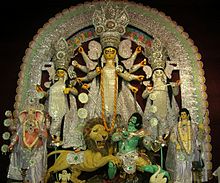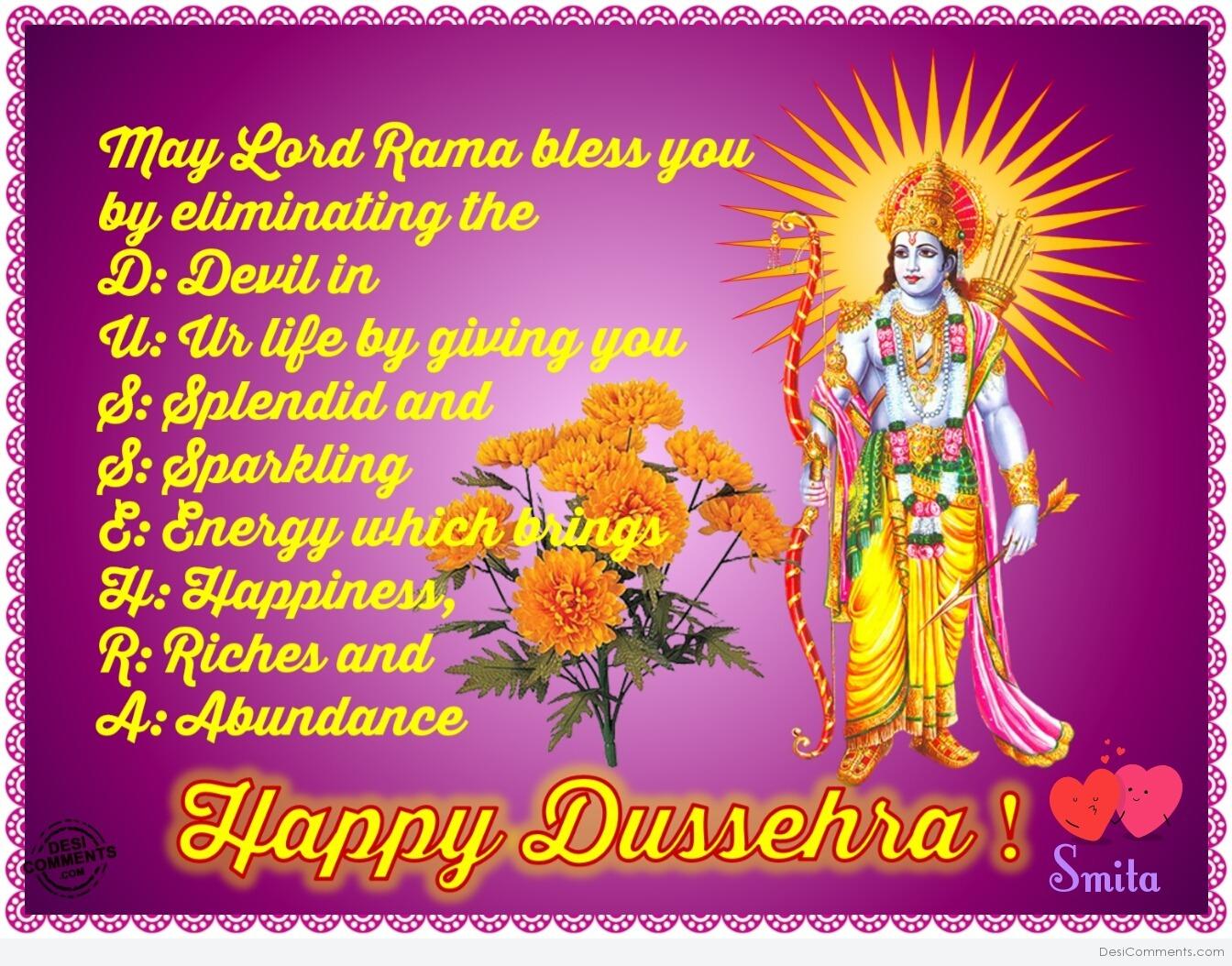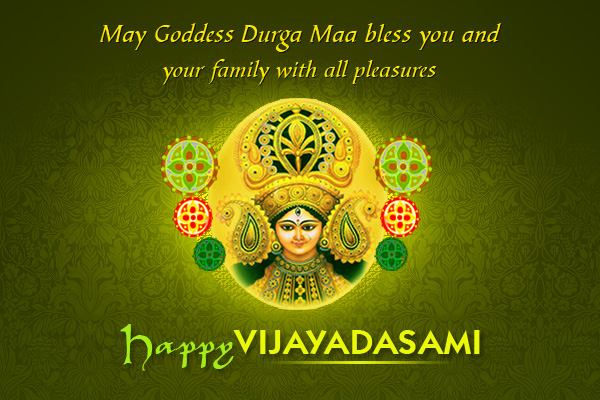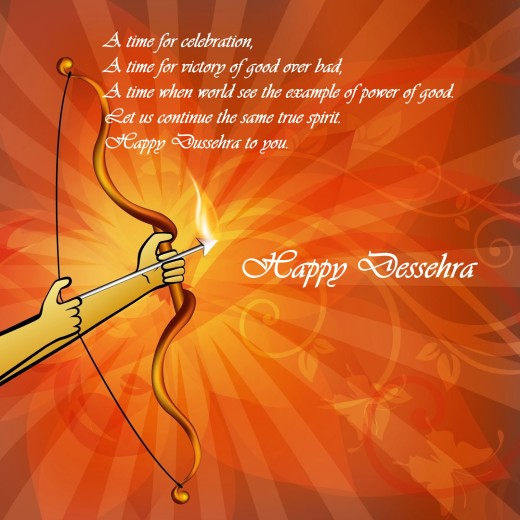Vijayadashami
Vijayadashami (Sanskrit: ) also known as Dussehra (Sanskrit: ) or Ayudhapuja (Sanskrit: ), is an important Hindu festival celebrated in a variety of ways in India, Nepal "Dussehra" is derived from Sanskrit; Dasha-hara is a form of Dashanan ravan ("Ravana's defeat").
The day marks the victory of Durga over the demon Mahishasura. The goddess fought with evil for ten days and nine nights. "Vijayadashami" is derived from the Sanskrit vijaya-dashami (victory on the dashami: the tenth day of the Hindu month). Diwali, the Festival of Lights, is celebrated twenty days after Vijayadashami.
Vijayadashami is celebrated on the tenth day of brighter fortnight the month of Ashwin according to the Hindu calendar, corresponding to September or October of the Gregorian calendar. The first nine days are celebrated as Navratri (Devnagari: , "nine nights"), culminating on the tenth day as Dussehra.
Since the harvest season begins in India and Nepal at this time, the Durga is invoked by religious rituals to begin the harvest season and renew the fertility of the soil. Many Hindus observe the festival with social gatherings and food offerings to the gods at home and in temples throughout India and Nepal.
Victory of Ram over Ravan

Ravana burning in effigy withsparklers in Manchester, 2006
On this day Ram (the seventh avatar of Vishnu) killed Ravan, who had abducted Ram's wife Sita to his kingdom Lanka. Ram, his brotherLakshman, their disciple Hanuman and an army fought a battle to rescue Sita. The story is recorded in the Hindu epic, the Ramayan.
On the day of Ashvin Shukla Dashami, Ram defeated Ravana and rescued Sita. Based on inferences from Valmiki's Ramyan, Klids'sRaghuvaa, Tulsidas' Ramcharitmanas and Keshavdas' Ramchandrika, Ram, Sita and Lakshman returned to Ayodhya on the 30th day of Ashwin (19-20 days after Vijayadashami). To celebrate Ram's return, in the evening the city's residents lit millions of earthen lamps (deepak); the day is celebrated in India as Deepawali
Observers recite Sundar Kaand (the fifth book of the Ramayan) for five days. Yajnas are thought to keep the household clean and healthy. Some perform yajnas and Sandhyavandanam three times a day to keep the heart, brain and digestion balanced in the absence of adequate winter sunlight.
Durga's victory over Mahishasur

Durga Puja at the BagbazarSarbajanin in north Kolkata
Some of the demigods (asurs) were powerful and ambitious, and tried to defeat the devs and capture heaven. One asur, Mahishasur, grew powerful and wreaked havoc on earth. Under his leadership, the asurs defeated the devs. The devs combined into Shakti (a mass of incandescent energy) to kill Mahishasur.
A bolt of lightning emerged from the mouths of Brahma, Vishnu and Shiva, and a young, beautiful female virgin with ten hands appeared. The gods gave her their weapons, and Shakti coalesced to form the goddess Durga. On a lion who assisted her, Durga fought Mahishasur for nine days and nights; on the tenth day, Mahishasur was killed. Durga, as Shiv's consort, represents two forms of female energy: mild and protective, and fierce and destructive.
Durga's homecoming
Daksha (Brahma's son) and his wife, Prasuti, had a daughter named Sati. As a child, Sati worshiped Shiva as her would-be husband. Shiva, pleased with her worship, married her. Although Daksha opposed the marriage, he could not prevent it. He arranged a yajna, to which everyone but Shiva was not invited. Sati, ashamed of her father's behavior, killed herself. Shiva, anguished when he discovered this, lifted Sati's body on his shoulders and began dancing; the world was on the verge of destruction.
































comment:
p_commentcount